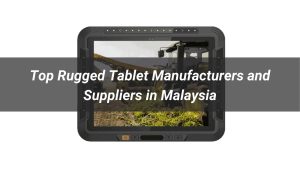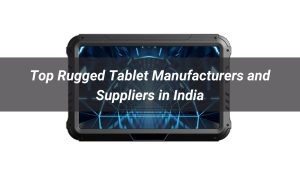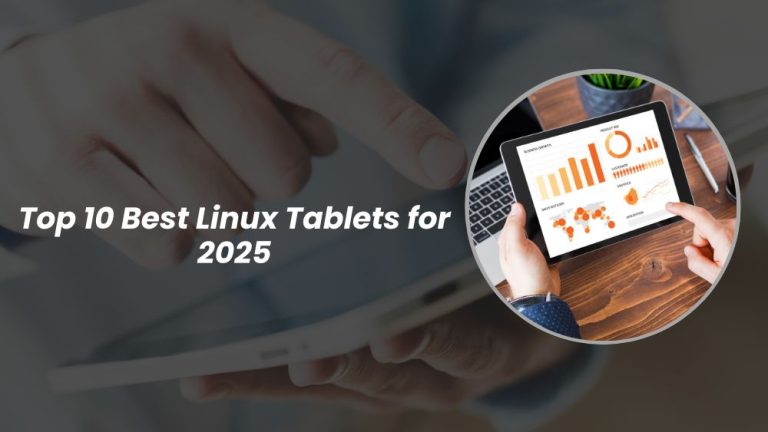In the modern mining industry, efficiency, safety, and productivity depend on real-time communication and data sharing. As the demand for more streamlined and connected operations grows, the importance of reliable devices capable of withstanding harsh environments while ensuring continuous data connectivity becomes paramount. This is where the mining tablet plays a critical role. These rugged devices not only handle the extreme conditions of mining operations but also facilitate real-time data connectivity, enabling workers, managers, and machinery to communicate and collaborate effectively, often across large, remote areas.
In this article, we will explore how mining tablets enable real-time data connectivity in mining environments, their benefits for operational efficiency and safety, and the critical features that make them indispensable for modern mining operations.
The Role of Real-Time Data Connectivity in Mining
Mining is a complex and dynamic industry that requires constant communication between multiple stakeholders, from on-site workers and equipment operators to management teams and remote offices. Whether underground or in an open-pit mine, every second counts, and the ability to transmit data and receive instructions in real time can make a significant difference in the outcome of a project.
1. Monitoring Equipment and Machinery
Mining operations heavily rely on various machinery and equipment, from drill rigs to haul trucks, all of which need constant monitoring to ensure optimal performance. A mining tablet equipped with real-time data connectivity can gather data from sensors embedded in machinery and transmit that information back to a central monitoring system. This allows operators to track equipment performance, detect potential issues early, and schedule maintenance before breakdowns occur, minimizing downtime.
2. Tracking and Managing Resources
In mining, managing resources efficiently is critical to maintaining profitability. Real-time connectivity through mining tablets allows for accurate tracking of resource usage, such as fuel consumption, raw materials, and spare parts. This data can be shared instantly with management teams, helping them make informed decisions about inventory levels, logistics, and procurement. By ensuring that resources are optimally allocated, mining companies can reduce waste, save costs, and improve overall operational efficiency.

3. Enhancing Worker Safety
Safety is a top priority in mining, where workers face numerous hazards, including unstable terrain, heavy machinery, and dangerous gases. Mining tablets with real-time data connectivity can play a critical role in improving safety by enabling real-time tracking of worker locations, monitoring environmental conditions, and issuing immediate alerts in case of emergencies. For example, if gas levels rise to dangerous levels or if an underground collapse occurs, the tablet can send alerts to both workers and supervisors, allowing for swift evacuation or corrective action.
4. Streamlining Communication Between Teams
Effective communication between teams is vital in mining, especially when operations span vast geographic areas or multiple underground levels. Mining tablets equipped with wireless connectivity enable instant messaging, video conferencing, and data sharing between workers on-site and management teams in remote offices. This reduces delays, improves decision-making, and ensures that everyone has access to the most up-to-date information. Whether it’s sending new excavation plans or adjusting production targets, real-time communication keeps operations running smoothly.
The Importance of Real-Time Data Connectivity in Mining Tablets
Real-time data connectivity in mining tablets is essential for several reasons. Not only does it improve operational efficiency, but it also ensures worker safety, optimizes resource allocation, and reduces operational costs. Below are some of the main reasons why real-time data connectivity in mining tablets is indispensable.
1. Immediate Decision-Making
The mining industry is highly time-sensitive, and delays in data transfer can result in costly production halts or safety incidents. With real-time connectivity, managers and supervisors can monitor operations continuously, receive updates instantly, and make immediate decisions based on current conditions. For instance, if equipment starts showing signs of failure, immediate notifications allow the team to halt operations, fix the issue, and resume quickly, preventing major disruptions.
2. Improved Data Accuracy
Manual data entry in mining operations often leads to errors and delays, which can impact decision-making and overall performance. Mining tablets equipped with real-time connectivity can automatically capture and transmit data, reducing the risk of human error. For example, the tablet can sync directly with sensors placed on mining equipment to provide accurate readings on performance, fuel levels, and other critical metrics. This level of precision helps companies avoid costly mistakes and operate more efficiently.

3. Increased Transparency Across Operations
Real-time data connectivity fosters greater transparency across mining operations. Data from various stages of the mining process—whether it’s equipment usage, resource allocation, or safety conditions—can be shared with all relevant stakeholders in real time. This means that upper management, on-site supervisors, and remote operators are all on the same page, enabling more effective collaboration. This transparency also makes it easier to report on performance metrics, audit processes, and meet regulatory compliance requirements.
4. Reduced Downtime
Downtime in mining can be costly, whether it’s due to equipment failure or logistical delays. Mining tablets with real-time data connectivity help prevent downtime by enabling predictive maintenance. By constantly monitoring machinery and collecting data on its performance, these tablets can alert operators to potential issues before they become critical. This proactive approach helps companies schedule maintenance during planned downtime instead of waiting for unexpected breakdowns, ultimately improving productivity and reducing costs.
Key Connectivity Features in Mining Tablets
Not all tablets are suitable for mining environments, and there are specific connectivity features that a mining tablet must possess to function effectively. Below are some of the most important connectivity features that enable mining tablets to provide reliable real-time communication and data transfer in mines.
1. 5G and 4G LTE Connectivity
Mining operations often take place in remote areas where reliable internet access is limited. However, with the advancement of cellular technology, mining tablets equipped with 5G or 4G LTE connectivity can access high-speed mobile networks, ensuring that data can be transmitted in real time, even in remote or underground locations. The use of 5G technology is particularly beneficial, offering ultra-low latency, higher bandwidth, and faster data transfer speeds, which are critical for supporting the real-time demands of modern mining operations.
2. Wi-Fi and Mesh Networking
While cellular networks are valuable for wide-area connectivity, on-site Wi-Fi networks or mesh networks are commonly used within mining environments. Mining tablets with dual-band Wi-Fi support can connect to local networks for fast data transmission within the mine site. Mesh networks, which consist of multiple interconnected devices, create a seamless communication network that covers large underground or surface areas, ensuring constant connectivity for workers and machines.
3. GPS and GNSS for Location Tracking
Mining operations often cover large geographic areas, and accurate location tracking is essential for both asset management and worker safety. Mining tablets equipped with GPS (Global Positioning System) and GNSS (Global Navigation Satellite System) capabilities allow for precise tracking of vehicles, machinery, and personnel. This not only helps in optimizing the deployment of resources but also improves emergency response times in case of accidents or safety breaches.
4. Bluetooth and NFC for Short-Range Communication
In addition to long-range connectivity, mining tablets often support short-range communication technologies such as Bluetooth and NFC (Near Field Communication). These features enable quick data transfer between devices in close proximity, such as scanning RFID tags, connecting to sensors, or syncing data with other equipment. Bluetooth is particularly useful for connecting peripherals like barcode scanners or headsets, enhancing worker productivity.
5. Rugged Connectivity Ports
Given the harsh environments in mining, mining tablets must have ruggedized connectivity ports that can withstand dust, moisture, and physical wear and tear. Standard USB ports may not hold up in such conditions, so mining tablets typically come with specially designed ports that are protected by rubber seals or other coverings. These rugged ports ensure stable and reliable connections with external devices, such as data cables, even in extreme conditions.
Benefits of Real-Time Data Connectivity in Mining Tablets
The integration of real-time data connectivity in mining tablets delivers numerous benefits to mining operations, ranging from improved decision-making to enhanced safety. Below are some of the key benefits:
1. Optimized Production
Real-time monitoring allows for better control over production rates and more efficient use of resources. With mining tablets transmitting data directly from machinery, operators can adjust production processes in real time to avoid bottlenecks or under-utilization. This ensures that mining operations are always running at optimal capacity.
2. Enhanced Safety Protocols
Real-time dataconnectivity makes it easier to implement safety protocols across mining sites. Mining tablets can be used to monitor worker locations, track hazardous conditions, and instantly notify teams of safety risks. In case of emergencies, workers can receive real-time evacuation instructions via their mining tablets, helping to reduce accidents and injuries.
3. Better Compliance and Reporting
Mining companies must comply with various environmental, health, and safety regulations. Mining tablets with real-time connectivity simplify the process of collecting and reporting data to regulatory bodies. Accurate data collection reduces the risk of compliance violations and helps streamline reporting processes, ensuring that mining operations meet industry standards.
4. Efficient Resource Management
By providing real-time insights into resource usage and equipment performance, mining tablets enable mining companies to better manage their resources. This includes tracking fuel consumption, monitoring spare parts inventory, and identifying areas for cost savings. Real-time connectivity helps ensure that resources are used efficiently, ultimately improving profitability.
In today’s competitive and fast-paced mining industry, real-time data connectivity is no longer a luxury but a necessity. Mining tablets, designed to operate in the harshest conditions, provide mining companies with the tools they need to stay connected, make informed decisions, and improve operational efficiency. Whether it’s ensuring worker safety, optimizing resource management, or enhancing communication, the real-time data capabilities of mining tablets have revolutionized how mines operate.
As technology continues to evolve, the role of mining tablets in ensuring reliable communication and data transfer will only grow, making them indispensable tools for the future of the mining industry. Investing in robust, connected tablets is essential for any mining company looking to enhance its productivity and maintain a competitive edge in this ever-demanding sector.













